State of Emergency Superseding the US Constitution
State of Emergency Superseding the US Constitution
Peter Dale Scott
In July 1987, during the Iran-Contra Hearings grilling of Oliver North, the American public got a glimpse of "highly sensitive" emergency planning North had been involved in. Ostensibly North had been handling plans for an emergency response to a nuclear attack (a legitimate concern). But press accounts alleged that the planning was for a more generalized suspension of the constitution at the president's determination.
| Oliver North at the Iran-Contra Hearings |
As part of its routine Iran-contra coverage, the following exchange was printed in the New York Times without journalistic comment or follow-up:
[Congressman Jack] Brooks: Colonel North, in your work at the N.S.C. were you not assigned, at one time, to work on plans for the continuity of government in the event of a major disaster?
Both North's attorney and Sen. Daniel Inouye, the Democratic Chair of the Committee, responded in a way that showed they were aware of the issue:
Brendan Sullivan [North's counsel, agitatedly]: Mr. Chairman?
[Senator Daniel] Inouye: I believe that question touches upon a highly sensitive and classified area so may I request that you not touch upon that?
Brooks: I was particularly concerned, Mr. Chairman, because I read in Miami papers, and several others, that there had been a plan developed, by that same agency, a contingency plan in the event of emergency, that would suspend the American constitution. And I was deeply concerned about it and wondered if that was an area in which he had worked. I believe that it was and I wanted to get his confirmation.
Inouye: May I most respectfully request that that matter not be touched upon at this stage. If we wish to get into this, I'm certain arrangements can be made for an executive session.1
Brooks was responding to a story by Alfonzo Chardy in the Miami Herald about Oliver North's involvement with the Federal Emergency Management Agency (FEMA) in planning for "Continuity of Government" (COG). According to Chardy, the plans envisaged "suspension of the Constitution, turning control of the government over to the Federal Emergency Management Agency, emergency appointment of military commanders to run state and local governments and declaration of martial law during a national crisis."2
Reagan had installed at FEMA a counterinsurgency team that he had already assembled as governor of California. The team was headed by Army Col. Louis Giuffrida, who had attracted Reagan's attention by a paper he had written while at the US Army War College, advocating the forcible warrantless detention of millions of black Americans in concentration camps. Reagan first installed Giuffrida as head of the California National Guard, and called on him "to design Operation Cable Splicer. … martial law plans to legitimize the arrest and detention of anti-Vietnam war activists and other political dissidents."3 These plans were refined with the assistance of British counterinsurgency expert Sir Robert Thompson, who had used massive detention and deportations to deal with the 1950s Communist insurgency in what is now Malaysia.
At the time few people (including myself) attached much importance to the Chardy story about COG. Chardy himself suggested that Reagan's Attorney General, William French Smith, had intervened to stop the COG plan from being presented to the President, and in 1985 Giuffrida was forced out of office for having spent government money to build a private residence. But COG planning not only continued, it expanded.
Seven years later, in 1994, Tim Weiner reported in the New York Times that what he called "The Doomsday Project" – the search for "ways to keep the Government running after a sustained nuclear attack on Washington" – had "less than six months to live."4
Weiner's language was technically correct, but also very misleading. In fact COG planning now simply continued with a new target: terrorism. On the basis of Weiner's article, the first two books to discuss COG planning, by James Bamford and James Mann, both reported that COG planning had been abandoned.5 Recently Tim Shorrock in 2008 repeated that "the COG program was abandoned during the Clinton administration," and Shirley Anne Warshaw in 2009 wrote that "the Clinton administration… shut down the super-secret Project."6 But on this specific point, all these otherwise excellent and well-informed authors were wrong.
What Weiner and these authors did not report was that in the final months of Reagan's presidency the purpose of COG planning had officially changed: it was no longer for arrangements "after a nuclear war," but for any "national security emergency." This was defined in Executive Order 12656 of 1988 as: "any occurrence, including natural disaster, military attack, technological emergency, or other emergency, that seriously degrades or seriously threatens the national security of the United States."7 In this way a totally legitimate program dating back to Eisenhower, of planning extraordinary emergency measures for an America devastated in a nuclear attack, was now converted to confer equivalent secret powers on the White House, for anything it considered an emergency.
This expanded application of COG was apparently envisaged as early as 1984, when, according to Boston Globe reporter Ross Gelbspan,
Lt. Col. Oliver North was working with officials of the Federal Emergency Management Agency . . . to draw up a secret contingency plan to surveil political dissenters and to arrange for the detention of hundreds of thousands of undocumented aliens in case of an unspecified national emergency. The plan, part of which was codenamed Rex 84, called for the suspension of the Constitution under a number of scenarios, including a U.S. invasion of Nicaragua.8
In other words, extreme measures, designed originally to deal with an externally directed and devastating nuclear attack, were being secretly modified to deal with domestic dissenters: a situation that still pertains today.9
The Implementation of COG on 9/11
Clearly 9/11 met the conditions for the implementation of COG measures, and we know for certain that COG plans were implemented on that day in 2001, before the last plane had crashed in Pennsylvania. The 9/11 Report confirms this twice, on pages 38 and 326.10 It was under the auspices of COG that Bush stayed out of Washington on that day, and other government leaders like Paul Wolfowitz were swiftly evacuated to Site R, inside a hollowed out mountain near Camp David.11
But the implementation of COG went beyond short-term responses, to the installation of what Professor Shirley Anne Warshaw calls a ninety-day alternative "shadow government" outside Washington.
Cheney jumped into action in his bunker beneath the east Wing to ensure continuity in government. He immediately began to create his shadow government by ordering one hundred mid-level executive officials to move to specially designated underground bunkers and stay there twenty-four hours a day. They would not be rotated out, he informed them, for ninety days, since there was evidence, he hinted, that the terrorist organization al-Qa'ida, which had masterminded the attack, had nuclear weapons. The shadow government, as a result, needed to be ready to take over the government from the bunkers.12
These ninety days saw the swift implementation of the key features attributed to COG planning by Gelbspan and Chardy in the 1980s: warrantless detentions, warrantless deportations, and the warrantless eavesdropping that is their logical counterpart. The clearest example was the administration's Project Endgame—a ten-year plan, initiated in September 2001, to expand detention camps, at a cost of $400 million in Fiscal Year 2007 alone.13 This implemented the central feature of the massive detention exercise, Rex 84, conducted by Louis Giuffrida and Oliver North in 1984.14
There was also a flurry of other rapid moves to restructure America's external and domestic structures. Before discussing these, I should acknowledge the obvious: that enhanced measures to deal with terrorism are needed, and for some of them we should be grateful. We should acknowledge also, however, that the most significant achievements against terrorism have been the result of traditional intelligence and police work. As for the War on Terror, the most prominent achievement of Cheney's ninety days, as many experts have asserted, it has created far more terrorists than it has disposed of.
On September 20, 2001, Bush launched the war on terror in a televised address to a joint session of congress, when he said, "Our 'war on terror' begins with al Qaeda, but it does not end there. It will not end until every terrorist group of global reach has been found, stopped and defeated." Today we now have about 100,000 US troops in Afghanistan to deal with an officially estimated 60 members of Al Qaeda. The predictable result has been an expansion of terrorist activities in Somalia, Yemen, and above all Pakistan.
| Bush launches the 'War on Terror' as Rumsfeld looks on |
The war on terror was administratively implemented in three National Security Presidential Directives, NSPDs 7, 8, and 9. All three are classified, and the topics of two of them are unknown. The third, NSPD 9 of October 25, 2001, directed the Secretary of Defense to plan military options against both Taliban and al Qaeda targets in Afghanistan.15
The October date is misleading. A version of the directive calling for covert action in Afghanistan had been approved by principals on September 4, 2001, one week before 9/11.16 An enhanced plan for military action in Afghanistan, had been approved by Bush on September 17; and the same document "directed the Pentagon to begin planning military options for an invasion of Iraq."17
Perhaps the most significant domestic product from Cheney's trimester mirabilis was the Patriot Act of October 25, 2001. Congress was given only one week to pass this 340-page bill, which in the opinion of researchers "was already written and ready to go long before September 11th."18 In 2007 the Justice Department acknowledged that FBI agents had abused the Patriot Act more than 1000 times.
We should not forget that the Patriot Act was only passed after lethal weapons-grade anthrax letters were mailed to two crucial Democratic Senators – Senators Daschle and Leahy – who had initially questioned the bill. After the anthrax letters, however, they withdrew their initial opposition.19 Someone – we still do not know who – must have planned those anthrax letters well in advance. We should not forget either that some government experts initially blamed the attacks on Iraq. Much later, referring to Fort Detrick, Salon reporter Glenn Greenwald pointed out that "the same Government lab where the anthrax attacks themselves came from was the same place where the false reports originated that blamed those attacks on Iraq."20
It is generally agreed that, of the three men in National Command Authority on 9/11, Cheney was the ideologue most committed to restoring the power of a presidency that had been weakened by Watergate.21 Cheney had already declared in his Iran-Contra Minority Report of 1987 his belief that "the Chief Executive will on occasion feel duty bound to assert monarchical notions of prerogative that will permit him to exceed the law."22 And as Vice-President Cheney, along with Cheney's assistant David Addington and Cheney's appointee John Yoo, established the legal apparatus for declaring that the President had the prerogative power to "deploy military forces preemptively," and that "the Geneva Conventions and other international agreements against torture 'do not protect members of the al Qaeda organization."23
By Executive Order 13228 of October 8, 2001, the President established an Office of Homeland Security within the presidential Executive Office. This has engendered in turn the DHS, now the third largest US Cabinet Department, and also a series of Homeland Security Presidential Directives. For example Homeland Security Presidential Directive-6 (HSPD-6) of September 16, 2003, created a Terrorism Screening Center (TSC), to "consolidate the Government's approach to terrorism screening."24
Since then we have become inured to repeated stories about nonviolent individuals who are prevented from boarding airplanes, because their names are in TSC computers on the No Fly List and the Terrorist Watch List. Senator Ted Kennedy testified in Congress that he had been repeatedly delayed at airports because a "T Kennedy" was on the No Fly List. Until July 2008, Nelson Mandela was also on the list.
In addition to the No Fly List, with 4000 names in 2009 and 8000 today, some people are prevented from flying because they are on the Terrorist Watch List, a much longer list which contained over one million names as of summer 2010. This is why Walter F. Murphy, a noted professor of constitutional law, was detained in 2007 on his journey to lecture, ironically, about his book Constitutional Democracy. According to Professor Murphy, he was asked by an airline employee,
"Have you been in any peace marches? We ban a lot of people from flying because of that" …."I explained," said Murphy, "that I had not so marched but had, in September 2006, given a lecture at Princeton, televised and put on the web, highly critical of George Bush for his many violations of the constitution." "That'll do it," the man said.25
In the end these cases were resolved satisfactorily. But you risk permanent deportation if you have an Arabic-sounding name. The ACLU is suing on behalf of Ayman Latif, not just a U.S. citizen but a disabled U.S. Marine veteran, who under Obama has been stranded in Egypt for months, because, on orders from the U.S. Embassy, he has not been able to board a plane to come home.
This is a real hardship case: Latif told NPR that "because I missed my appointments in the U.S. to be evaluated [as a disabled vet], now the VA administration is saying that they're going to cut my benefits from what they are now to zero." On the same program Stewart Baker, a former assistant secretary for policy with the Department of Homeland Security, vigorously defended the No Fly List. But when asked if there is "any legal authority by which the United States can say to a citizen who is abroad, you may not return to this country?" Baker replied, "I know of none."26 This did not seem to concern him.
Ayman Latif's case is far from unique. According to the New York Times,
Advocacy groups say they are trying to help Americans stranded in Yemen, Egypt, Colombia and Croatia, among other countries. At least one American, Raymond Earl Knaeble IV, who studied in Yemen and is now in Colombia, was returned to Colombia by the Mexican authorities after he sought to cross the border into the United States, the groups say.27
The Militarization of American Law Enforcement
Another post-9/11 innovation from the Giuffrida-Oliver North COG plans was the militarization of domestic United States law enforcement in 2002, under a new military command, NORTHCOM.28 Through NORTHCOM the U.S. Army now is engaged with local enforcement in the surveillance and counter-terrorism planning of America, in the same way that through CENTCOM it is engaged with local enforcement to police Iraq. Of course army platoons do not patrol roads and break down the doors of Kansas homes, as they routinely do in Iraq or Afghanistan. But behind the scenes, in so-called fusion centers, the military, the FBI, state police, along with private intelligence corporations like SAIC, maintain and analyze data to identify potential threats to those in power.29
| Northcom strategy to combat weapons of mass destruction |
These fusion centers "have been internally promoted by the US Army as means to avoid restrictions preventing the military from spying on the domestic population."30 In other words, administrative arrangements have been used to fulfill Giuffrida's plans of circumventing the Posse Comitatus Acts on the statute books, without repealing them.
The Proclamation of Permanent Emergencies
Finally, still in the 90-day "shadow government" period after 9/11, President Bush proclaimed two important emergencies that are still in force today.
1) On September 14, 2001, Bush issued Proclamation 7463 ("Declaration of National Emergency by Reason of Certain Terrorist Attacks") together with Executive Order 13223 ("Ordering the Ready Reserve of the Armed Forces To Active Duty"). As we shall see, the terms of this proclamation were significantly expanded when it was renewed in 2007.
2) "On September 23, 2001, by Executive Order 13224, the President declared a national emergency with respect to persons who commit, threaten to commit, or support terrorism, pursuant to the International Emergency Economic Powers Act (50 U.S.C. 1701-1706)."31 This gave the president the power to confiscate without trial or warning the property of individuals providing funds to entities, such as charitable foundations, which were judged to be supporting terrorism. The Executive Order initially blocked property of twenty-seven designated terrorists. But the list has become enormous. When I last looked at it, on November 18, 2010, the list included 87 pages just for the letter A.
A lawsuit has been instituted, asserting that the designation of alleged terrorists was arbitrary; and a lower court agreed that the president's designation authority is unconstitutionally vague.32 The case is under appeal.
Cheney and Rumsfeld on the Secret Committee to Plan COG
From its beginning in 1982, two of the key planners on the secret COG planning committee were Dick Cheney and Donald Rumsfeld, the same two men who implemented COG on 9/11.33 The committee had been established by Reagan under a secret executive order, NSDD 55 of September 14, 1982. Despite what Weiner implied, the committee continued to meet without interruption until the George W. Bush presidency in 2001.34
Thus Cheney and Rumsfeld continued their secret planning during the Clinton presidency; even after both men, both Republicans, were by that time heads of major corporations and not in the government. Andrew Cockburn cites a Pentagon source to support a claim that the Clinton administration had "no idea what was going on."
Although the exercises continued, still budgeted at over $200 million a year in the Clinton era, the vanished Soviets were now replaced by terrorists. . . . There were other changes, too. In earlier times the specialists selected to run the "shadow government" had been drawn from across the political spectrum, Democrats and Republicans alike. But now, down in the bunkers, Rumsfeld found himself in politically congenial company, the players' roster being filled almost exclusively with Republican hawks. . . ."You could say this was a secret government-in-waiting. The Clinton administration was extraordinarily inattentive, [they had] no idea what was going on."35
Cockburn's account requires some qualification. Richard Clarke, a Clinton Democrat, makes it clear that he participated in the COG games in the 1990s and indeed drafted Clinton's Presidential Decision Directive (PDD) 67 on "Enduring Constitutional Government and Continuity of Government."36 But COG planning involved different teams for different purposes. It is quite possible that the Pentagon official was describing the Department of Defense team dealing with retaliation.
It is important to understand that the COG "Doomsday Project" in the 1980s involved more than planning and exercises. It also oversaw "Project 908," the construction of a multibillion dollar infrastructure for an alternative government. The key element of this was an $8 billion communications and logistics program headquartered at Fort Huachuca, Arizona, the headquarters for Army Intelligence.37
Despite initial failures in the communications network, it was ready to be put into operation and utilized on September 11, 2001 by Vice-President Cheney.38 Key commands, including the implementation of COG itself, appear to have been made over this highest-classification security network.39 This may explain why a Boeing E-4B Advanced Airborne Command Post or "Doomsday Plane," the mobile communications center for the COG shadow government, was seen around 10 AM in the prohibited air space above the White House.40
There is no way to determine how many of the constitutional changes since 9/11 can be traced to COG planning. However we do know that new COG planning measures were still being introduced in 2007, when President Bush issued National Security Presidential Directive 51 (NSPD-51/HSPD-20). This Directive set out what FEMA later called "a new vision to ensure the continuity of our Government," and was followed in August by a new National Continuity Policy Implementation Plan.41
Under pressure from his 911truth constituents, Congressman Peter DeFazio of the Homeland Security Committee twice requested to see these Annexes. When his request was denied, DeFazio made a second request, in a letter signed by the Chair of his committee. The request was denied again.42
COG, The National Emergency, and the National Emergencies Act
I mentioned earlier that the Proclamation of a national emergency, issued by Bush on September 14, 2001, and since renewed annually to this day, changed significantly in 2007. All previous annual renewals had enumerated the emergency measures that were being renewed, for example "the measures taken on September 14, 2001, November 16, 2001, and January 16, 2002." After Bush issued NSPD-51 of 2007, with its "new vision" and its new classified COG Annexes, the next renewal of the Emergency proclamation replaced the previous specific enumerations with a more sweeping general sentence:
Because the terrorist threat continues, the national emergency declared on September 14, 2001, last extended on September 5, 2006, and the powers and authorities adopted to deal with that emergency, must continue in effect beyond September 14, 2007.43
"The powers and authorities adopted to deal with that emergency." This language is so vague, it is hard to see how it could not cover the "classified continuity annexes" of NSPD-51 as well. If so, the public proclamation was now proclaiming the continuation of secret powers. (The two renewals of the Emergency by Barack Obama do not repeat this language from 2007, but likewise fail to enumerate just what powers are being extended.)44
The National Emergencies Act, one of the post-Watergate reforms that Vice-President Cheney so abhorred, specifies that: "Not later than six months after a national emergency is declared, and not later than the end of each six-month period thereafter that such emergency continues, each House of Congress shall meet to consider a vote on a joint resolution to determine whether that emergency shall be terminated" (50 U.S.C. 1622, 2002).45 The law does not permit Congress to review an emergency; it requires Congress to review it.
Yet in nine years Congress has not once met to discuss the State of Emergency declared by George W. Bush in response to 9/11, a State of Emergency that remains in effect today. Appeals to the Congress to meet its responsibilities to review COG have fallen on deaf ears, even during periods when the Congress has been dominated by Democrats.46
Former Congressman Dan Hamburg and I appealed publicly in 2009, both to President Obama to terminate the emergency, and to Congress to hold the hearings required of them by statute.47 But Obama, without discussion, extended the 9/11 Emergency again on September 10, 2009,48 and again a year later.49 Meanwhile Congress has continued to ignore its statutory obligations.
One Congressman explained to a constituent that the provisions of the National Emergencies Act have now been rendered inoperative by COG. If true, this would indicate that the constitutional system of checks and balances no longer applies, and also that secret decrees now override public legislation as the law of the land.
With a few notable exceptions, there has thus far been scant interest in the media and the public in the extraordinary facts that Cheney and Rumsfeld were able to
1) help plan successfully for constitutional modifications, when not in government, and
2) implement these same changes themselves when back in power.
The first of these facts gives us a glimpse of an on-going power realm independent of the publicly acknowledged state. In the words of James Mann, "Cheney and Rumsfeld were, in a sense, a part of the permanent, though hidden, national security apparatus of the United States, inhabitants of a world in which Presidents come and go, but America always keeps on fighting."50 A CNN Special Assignment assessment of the COG planners was even more dramatic: "In the United States of America there is a hidden government about which you know nothing."51
What is the first step out of this current state of affairs, in which the constitution appears to have been superseded by a higher, if less legitimate authority? I submit that it is to get Congress to do what the law requires, and determine whether our present proclamation of emergency "shall be terminated" (50 U.S.C. 1622, 2002).
As part of this procedure, Congress should find whether secret COG powers, never submitted to Congress or seen by it, are among "the powers and authorities" which Bush in 2007 included in his prolongation of the 2001 emergency and which are maintained today under Obama.
This is not a technical or procedural detail. It is a test of whether the United States is presently governed by its laws and constitution, or whether, as has been alleged, the laws and constitution have now in places been superseded by COG.
Congress should go further to look into the activities of Cheney's ninety days of COG shadow government in 2001, and their relationship to the genesis of the Patriot Act, the ten-year program for detention camps, and the permanent militarization of US domestic law enforcement.
This is a slightly revised, expanded, and developed text of an address to the Commonwealth Club, San Francisco, November 23, 2010.
Peter Dale Scott, a former Canadian diplomat and English Professor at the University of California, Berkeley, is the author of Drugs Oil and War, The Road to 9/11, The War Conspiracy: JFK, 9/11, and the Deep Politics of War. His American War Machine: Deep Politics, the CIA Global Drug Connection and the Road to Afghanistan is in press.
His website, which contains a wealth of his writings, is here.
Recommended citation: Peter Dale Scott, "Is the State of Emergency Superseding the US Constitution? Continuity of Government Planning, War and American Society," The Asia-Pacific Journal, 48-1-10, November 29, 2010.
Notes
1 New York Times, July 14, 1987. We have never heard if there was or was not an executive session, or if the rest of Congress was ever aware of the matter. According to James Bamford, "The existence of the secret government was so closely held that Congress was completely bypassed. Rather than through legislation, it was created by Top Secret presidential fiat. In fact, Congress would have no role in the new wartime administration. 'One of the awkward questions we faced,' said one of the participants, 'was whether to reconstitute Congress after a nuclear attack. It was decided that no, it would be easier to operate without them.'" (James Bamford, A Pretext for War: 9/11, Iraq, and the Abuse of America's Intelligence Agencies [New York: Doubleday, 2004], 74); cf. James Mann, The Rise of the Vulcans: The History of Bush's War Cabinet [New York: Viking, 2004], 145). But key individuals in Congress were, such as Sen. Inouye of the Senate Intelligence Committee, were certainly aware of something.
2 Miami Herald, July 5, 1987. In October 1984 Jack Anderson reported that FEMA's plans would "suspend the Constitution and the Bill of Rights, effectively eliminate private property, abolish free enterprise, and generally clamp Americans in a totalitarian vise."
3 Diana Reynolds, The Rise of the National Security State: FEMA and the NSC, Political Research Associates, Covert Action Information Bulletin, #33 (Winter 1990). "Earlier, Governor Reagan in California had authorized the development of a counterinsurgency plan (known as Cable Splicer) and exercises to deal with such crises, in conjunction with the U.S. Sixth Army and the Pentagon (Operation Garden Plot). The cadres developing Cable Splicer (headed by Louis Giuffrida), were with Reagan's elevation to the presidency transferred into FEMA. As head of FEMA, Giuffrida pursued plans for massive detention of dissidents; these became so extreme that even Reagan's attorney general, William French Smith, raised objections" (Scott, The Road to 9/11, 184; citing Gelbspan, Break-ins, 184).
4 Tim Weiner, New York Times, April 17, 1994.
5 Bamford, A Pretext for War, 74; cf. James Mann, The Rise of the Vulcans: The History of Bush's War Cabinet (New York: Viking, 2004), 138-45.
6 Tim Shorrock, Spies for hire: the secret world of intelligence outsourcing (New York: Simon & Schuster, 2008)., 78; Shirley Anne Warshaw, The co-presidency of Bush and Cheney (Stanford, Calif. : Stanford Politics and Policy, 2009), 162
7 The provisions of Executive Order 12656 of Nov. 18, 1988, appear at 53 FR 47491, 3 CFR, 1988 Comp., p. 585, link. The Washington Post (March 1, 2002) later claimed, falsely, that Executive Order 12656 dealt only with "a nuclear attack." Earlier there was a similar misrepresentation in the New York Times (November 18, 1991).
8 Ross Gelbspan, Break-ins, Death Threats, and the FBI (Boston: South End Press, 1991), 184; cf. New York Times, November 18, 1991. REX 84 (short for Readiness Exercise 84) turned out to be part of a series of such exercises (now known as Continuity of Operations Exercises) that have continued under FEMA down into the Obama era. See for example the Department of Homeland Press Release, "DHS Conducts Continuity of Operations Exercise," June 17, 2009, link.
9 In stressing the alteration of our present political milieu by an extra-governmental group, I do not intend to exonerate Congress. In 1981 Congress passed the Military Cooperation with Civilian Law Enforcement Agencies Act. According to a brilliant and prescient essay written by an Air Force Colonel at the National War College, the Act "was specifically intended to force reluctant military commanders to actively collaborate in police work" (Air Force Lt. Col. Charles E. Dunlap, "The Origins of the American Military Coup of 2012;" quoted in Harry G. Summers, The new world strategy: a military policy for America's future (New York: Simon & Schuster, 1995), 195.
10 9/11 Commission Report, 38, 326; Peter Dale Scott, The Road to 9/11: Wealth, Empire, and the Future of America (Berkeley and Los Angeles: University of California Press, 2007), 228-29.
11 Alfred Goldberg et al., Pentagon 9/11 (Washington: Department of Defense, 2007), 132.
12 Warshaw, The co-presidency of Bush and Cheney, 164-65; cf. Washington Post, March 1, 2002; Scott, Road to 9/11, 237. Warshaw took the characterization of "shadow government" from earlier reports by U.S. News and World Report in 1989, and CNN in 1991 (Warshaw, 162).
13 Scott, Road to 9/11, 238, 240-41.
14 "The exercise anticipated civil disturbances, major demonstrations and strikes that would affect continuity of government and/or resource mobilization. To fight subversive activities, there was authorization for the military to implement government ordered movements of civilian populations at state and regional levels, the arrest of certain unidentified segments of the population, and the imposition of martial rule" (Diana Reynolds, "The Rise of the National Security State: FEMA and the NSC," Political Research Associates, Covert Action Information Bulletin, #33 (Winter 1990).
15 "NSPD-9: Combating Terrorism," Federation of American Scientists: "On April 1, 2004, the White House released the following characterization of this otherwise classified document: "The NSPD called on the Secretary of Defense to plan for military options 'against Taliban targets in Afghanistan, including leadership, command-control, air and air defense, ground forces, and logistics.' The NSPD also called for plans 'against al Qaeda and associated terrorist facilities in Afghanistan, including leadership, command-control-communications, training, and logistics facilities.'"
16 "NSPD-9: Combating Terrorism," citing testimony of Donald Rumsfeld before 9/11 Commission, March 23, 2304. Cf. Richard Clarke, Against All Enemies, 237-38; Steve Coll, Ghost Wars (New York: Penguin, 2004), 574-76; 9/11 Commission Report, 212-14. A draft of the presidential directive had originally been circulated in June 2001 (9/11 Commission Report, 208). But the directive approved on September 4 was for covert action only (9/11 Commission Report, 213).
17 James Bamford, A Pretext for War, 287.
18 Jennifer Van Bergen, "The USA PATRIOT Act Was Planned Before 9/11," Truthout.org, May 20, 2002. Van Bergen notes a parallel with the Patriot Act's predecessor, the Antiterrorism Act of 1996: "James X. Dempsey and David Cole state in their book, 'Terrorism & the Constitution: Sacrificing Civil Liberties in the Name of National Security,' that the most troubling provisions of the pre-USAPA anti-terrorism laws, enacted in 1996 and expanded now by the USAPA, 'were developed long before the bombings [i.e. the Oklahoma bombing of 1995] that triggered their final enactment.'"
19 Cf. Time, Nov. 26, 2001: "While Daschle, the Senate majority leader, could have been chosen as a representative of all Democrats or of the entire Senate, Leahy is a less obvious choice, most likely targeted for a specific reason. He is head of the Senate Judiciary Committee, which is involved in issues ranging from antitrust action to antiterror legislation" [emphasis added]. See also Anthony York, "Why Daschle and Leahy?" Salon, November 21, 2001.
20 Glenn Greenwald, "Vital unresolved anthrax questions and ABC News," Salon, August 1, 2008.
21 Lew Dubose and Jake Bernstein, Vice: Dick Cheney and the Hijacking of the American Presidency (New York: Random House, 2006), 28: "Dick Cheney…would spend the rest of his career working to restore the Nixon vision of an all-powerful executive, by undoing the Watergate reforms that came out of the early seventies."
22 Schwarz and Huq, Unchecked and Unbalanced, 174; emphasis added.
23 Lew Dubose and Jake Bernstein, Vice: Dick Cheney and the Hijacking of the American Presidency, 187-90; citing John Yoo memos of September 25, 2001 ("deploy") and January 2002 ("do not protect").
24 Department of Justice, "Review of the Terrorist Screening Center," link.
25 Naomi Wolf, "Fascist America," Guardian (London), April 24, 2007.
26 "Former U.S. Marine Placed On 'No Fly' List, Sues FBI," NPR, August 5, 2010, link. Even my two-year old grandson and his family were taken aside for special questioning at the airport, because of his middle name, Yusuf.
27 Scott Shane, "American Man in Limbo on No-Fly List," New York Times, June 16, 2010.
28 U.S. Department of Defense, "U.S. Northern Command," link. Cf. John R. Brinkerhoff, PBS, Online Newshour, 9/27/02: "The United States itself is now for the first time since the War of 1812 a theater of war. That means that we should apply, in my view, the same kind of command structure in the United States that we apply in other theaters of war." Brinkerhoff had earlier developed the martial law provisions of REX 84 in the Reagan era.
29 Shorrock, Spies for Hire, 344.
30 Julian Assange, "The spy who billed me twice," Wikileaks. The March 2009 Army manual "US Army Concept of Operations for Police Intelligence Operations" contains phrases such as "It [fusion] does not have constraints that are emplaced on MI [Military Intelligence] activities within the US, because it operates under the auspice and oversight of the police discipline and standards."
31 "Notice-Continuation of the National Emergency With Respect to Persons Who Commit, Threaten To Commit, or Support Terrorism," Daily Compilation Of Presidential Documents" ("Author: Obama, Barack H"), September 16, 2010, link.
32 Humanitarian Law Project v. United States Department of Treasury.
33 Scott, The Road to 9/11: Wealth, Empire, and the Future of America (Berkeley and Los Angeles: University of California Press, 2007), 183-87.
34 Mann, Rise of the Vulcans, 142 (order); (Boulder, CO: Westview Press), pp. 59, 71, 102-104, and 158-178 (NSDD 55); Andrew Cockburn, Rumsfeld: His Rise, Fall, and Catastrophic Legacy (New York: Scribner, 2007), 88 (2001).
35 Andrew Cockburn, Rumsfeld: His Rise, Fall, and Catastrophic Legacy (New York: Scribner, 2007), 88.
36 Richard A. Clarke, Against All Enemies: Inside America's War on Terrorism (New York: Simon & Schuster, 2004), 8, 165-75.
37 Shorrock, Spies for hire, 72-75, 292-96. Warshaw and others have referred to the whole COG operation as "Project 908;" but on the basis of available evidence I believe that Project 908 was the construction program only, as opposed to the planning and exercises which also took place. Project 908 attracted the attention of Steve Emerson and other journalists in 1989, when it was revealed that there had been huge cost overruns, double billing for the same work, and eventually destruction of many key contract documents in the course of an Army investigation. The son of the Army general overseeing the project, former Congressman Rick Renzi, was eventually indicted in 2008 on related charges of extortion, fraud, money laundering and other crimes. Steven Emerson, "America's Doomsday Project," U.S. News & World Report, August 7, 1989, 26-31. As of this writing, Rick Renzi's trial, which was scheduled to begin in March 2010, "has been postponed indefinitely" (Arizona Republic, March 16, 2010,
38 See e.g. Richard A. Clarke, Against All Enemies, 91.
39 See discussion in Scott, Road to 9/11, 223-36. There were reports that when Bush was airborne in Air force One on 9/11, there were connectivity problems forcing the president to use an ordinary cell phone (Paul Thompson, The Terror Timeline: Year by Year, Day by Day, Minute by Minute [NewYork: HarperCollins/Regan Books, 2004], 437). This may help explain why Air Force One eventually flew to Offutt Air Force Base near Omaha, where the E4-B "Doomsday Planes" are based.
40 CNN, September 11, 2007, video. On the CNN show 9/11 Commission Co-chair Lee Hamilton said he had a vague memory of the mystery plane story, but that it was never discussed by the 9/11 Commission. CNN promptly withdrew its 9/11 E-4B story from its website ("CNN Pulls 9/11 E4B 'Doomsday' Plane Video Over White House," digg, September 13, 2007,
41 Federal Emergency Management Agency, Federal Continuity Directive 1, link. NSPD-51 also nullified PDD 67, Richard Clarke's COG directive of a decade earlier; and it referred to new "classified Continuity Annexes" which shall "be protected from unauthorized disclosure."
42 Dennis Kucinich, David Swanson, Elizabeth De La Vega, The 35 Articles of Impeachment and the Case for Prosecuting George W. Bush ([Port Townsend, Wash.] : Feral House, [2008]), 81; Peter Dale Scott, "Congress, the Bush Administration and Continuity of Government Planning: The Showdown," CounterPunch, March 31, 2008.
43 "Notice: Continuation of the National Emergency with Respect to Certain Terrorist Attacks," Federal Register, September 12, 2007, link, emphasis added.
44 "Notice from the President on the Continuation of the National Emergency with Respect to Certain Terrorist Attacks:….Consistent with section 202(d) of the National Emergencies Act, 50 U.S.C. 1622(d), I am continuing for 1 year the national emergency previously declared on September 14, 2001, in Proclamation 7463, with respect to the terrorist attacks of September 11, 2001, and the continuing and immediate threat of further attacks on the United States. Because the terrorist threat continues, the national emergency declared on September 14, 2001, and the powers and authorities adopted to deal with that emergency must continue in effect beyond September 14, 2010. Therefore, I am continuing in effect for an additional year the national emergency that was declared on September 14, 2001, with respect to the terrorist threat. This notice shall be published in the Federal Register and transmitted to the Congress. BARACK OBAMA, THE WHITE HOUSE, September 10, 2010," link.
45 This language overruled the specification in President Ford's Executive Order 11921 the same year, that, when a state of emergency was declared by the President, Congress could not review the matter for a period of six months.
46 Cf. Peter Dale Scott and Dam Hamburg, "To All Readers: Help Force Congress To Observe the Law on National Emergencies!!!," 911Truth.org, March 24, 2009, link.
47 Peter Dale Scott, "To All Readers: Help Force Congress To Observe the Law on National Emergencies!!!" (with Dan Hamburg), http.//www.truth.org, March 24, 2009.
48 White House Press Release, September 10, 2009, link. A press briefing by Obama's spokesman Robert Gibbs the same day did not mention the extension.
49 White House Press Release, September 10, 2010, link.
50 James Mann, Rise of the Vulcans, 145.
51 CNN Special Assignment, November 17, 1991.
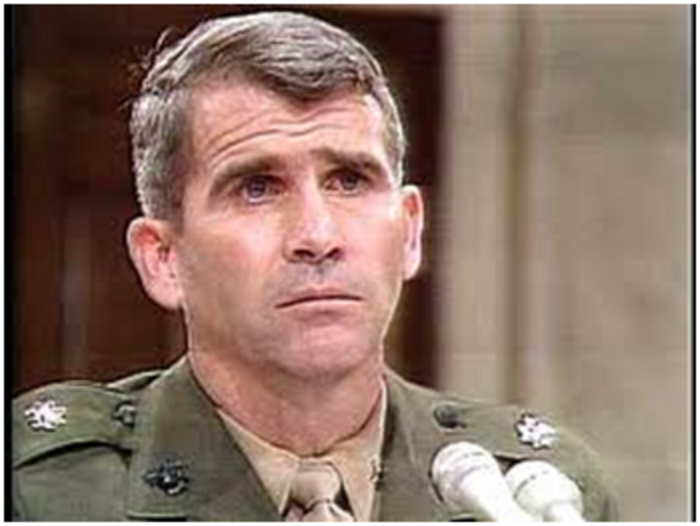
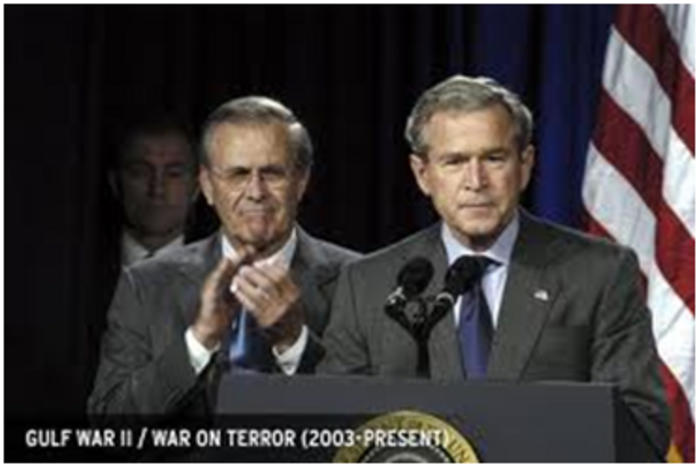
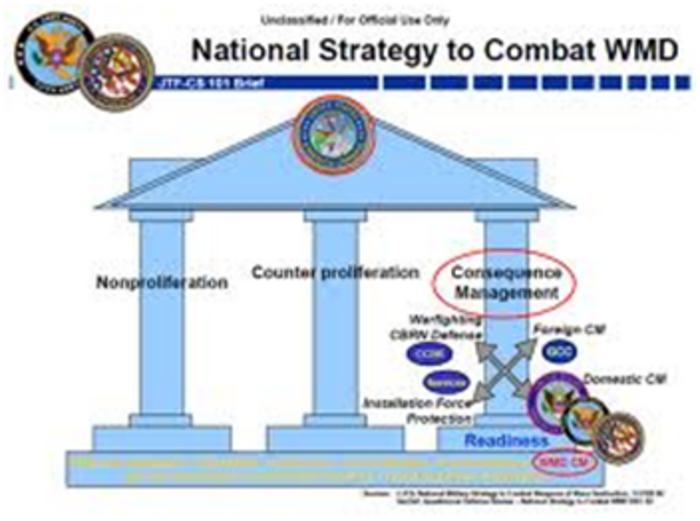
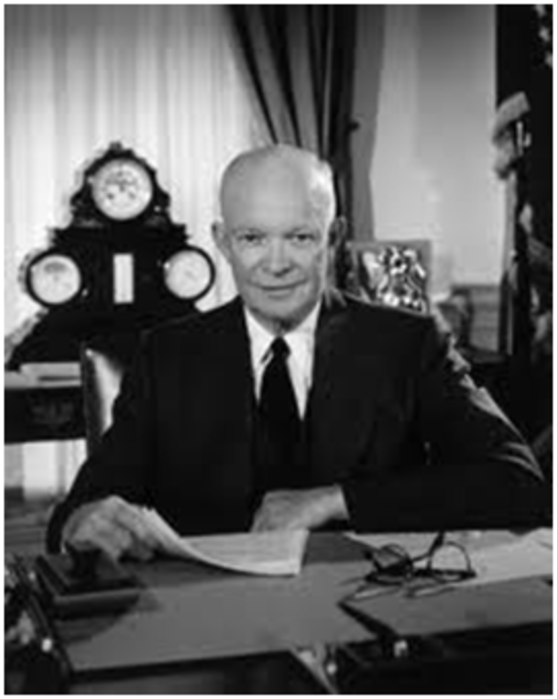


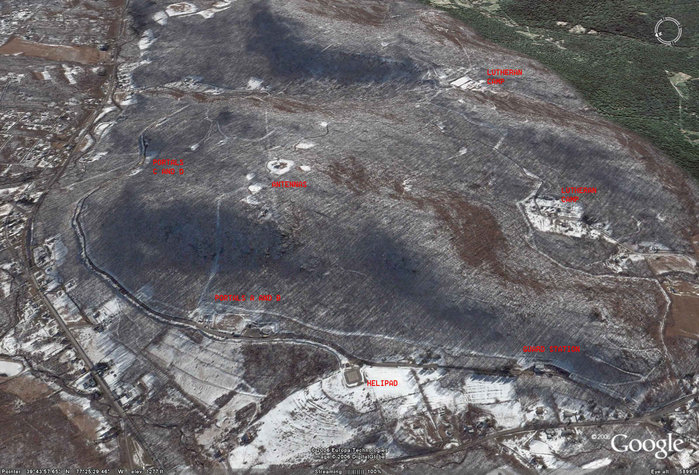
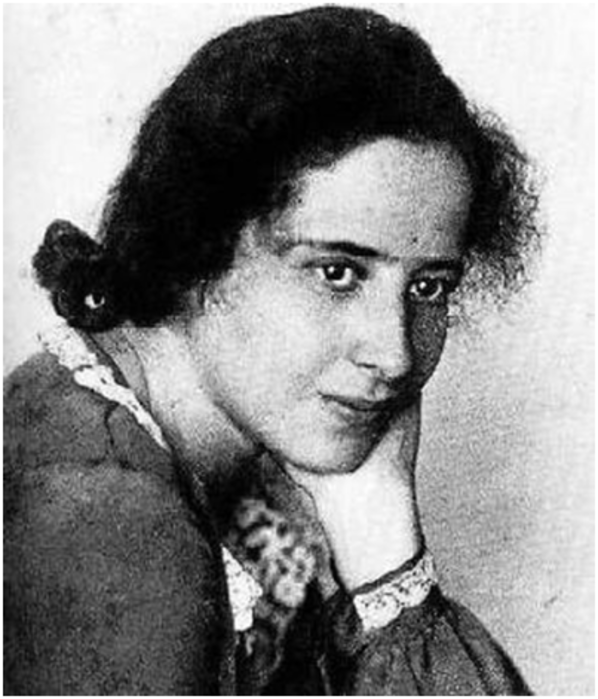
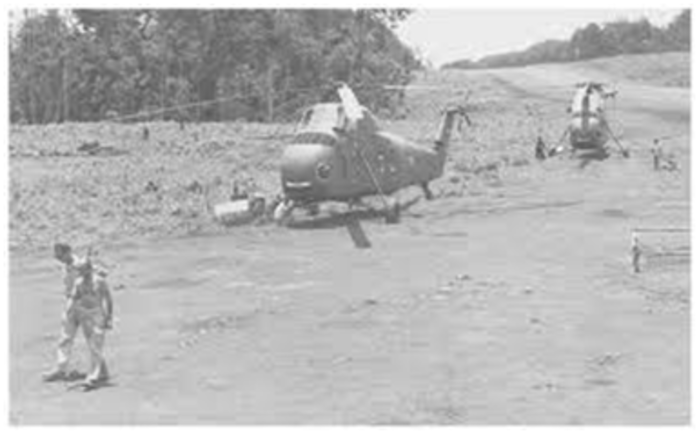
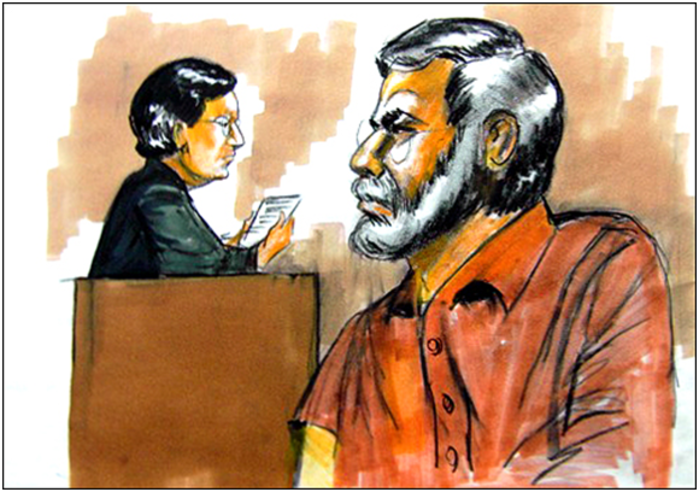
 Earth's magnetic field:
Earth's magnetic field:
